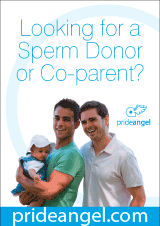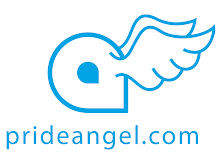Thursday, 2 August 2012
New IVF proposals for same sex couples and women up to 42 years
Same-sex couples and women aged up to 42 may soon be eligible for IVF treatment, according to new draft guidelines published today. The proposals were issued by the National Institute for health and Clinical Excellence (NICE) and featured prominently in the news, although they also include a range of recommendations not covered by the media.
NICE last issued full guidelines on IVF in 2004, but since then there have been advances in the drugs and techniques available. To take these changes and recent evidence into account, NICE has drawn up new extensive guidelines on everything from who should get IVF to the individual drugs that should be used.
The provisional recommendations include raising the upper age limit for IVF from 39 to 42 for some women and offering fertility treatments to same-sex couples, people whose disability prevents them having sex and people whose fertility might be damaged by cancer treatment.
Despite the tone of some newspaper coverage, the guidelines are currently at a provisional “consultation stage” where outside parties can voice their views on what should be included. The recommendations are not final, and could change significantly before they are officially published later this year.
Have the guidelines changed?
NICE is the body responsible for setting out the guidance and standards for treating specific diseases and conditions within the NHS in England and Wales. NICE last published full guidance on IVF in 2004, and since then there have been advances in research and fertility treatments, which means there is now a better understanding of different fertility techniques. Further to these developments, NICE has begun updating its guidance on IVF and has released a draft version proposing new recommendations on the way infertility is assessed and treated.
The draft update includes several new recommendations. It is important to note that the recommendations in the draft guidance are only provisional, and that these may change following consultation with various organisations and experts in the field, including medical bodies and charities. The final guidelines are set for publication around the end of 2012.
What do the new proposals say?
The updated draft guidelines released today for public consultation include the following key suggested changes:
- extending the upper age limit of women who can receive one cycle of IVF to 42 years old
- increasing the number of embryos implanted into the womb during a cycle of IVF
- excluding oral ovarian stimulation agents that have previously been recommended
- making new groups of the population eligible to receive fertility treatment
The draft proposals suggest making IVF available to:
- people who are unable to have sexual intercourse (such as those with a physical disability) - people preparing for cancer treatment who may wish to preserve their fertility (some cancer treatments damage fertility) - same-sex couples - people carrying an infectious disease, such as hepatitis B or HIV
Under the draft guidelines, some of these groups would be granted access to IVF under slightly different criteria from “conventional infertility treatment”, as their circumstances may warrant modified approaches. For example, the regular eligibility criteria normally applied to freezing eggs would no longer apply when trying to preserve the fertility of women awaiting cancer treatment.
When discussing the guidelines, Dr Gill Leng, deputy chief executive at NICE, said: “Infertility is a medical condition that can cause significant distress for those trying to have a baby. This distress can have a real impact on people's lives, potentially leading to depression and the breakdown of relationships.
“The aim of these new and updated recommendations is to ensure that everyone who has problems with fertility has access to the best levels of help,” Dr Leng added.
Who is currently eligible for IVF?
The current 2004 NICE guidelines recommend that three stimulated cycles of IVF treatment should be offered to couples with identified fertility problems or infertility for at least three years if the female partner is aged between 23 and 39 years old.
What happens next?
The draft NICE clinical practice guideline on fertility will now undergo a period of external consultation until July 2012. Relevant interested parties and experts in the field are invited to make comments on the guidelines if they feel there are elements that may need reviewing or altering. When published, the update will replace some, but not all, of the original guideline. The guideline is likely to be finalised towards the end of 2012 and, until final publication of the updated guidelines, NHS bodies should continue to follow the recommendations set in the current 2004 guidelines
Article: 1st August 2012 www.eastlothiannews.co.uk
Labels:
ivf cost,
ivf funding,
ivf news,
ivf nhs,
ivf over 40,
same sex ivf
Subscribe to:
Post Comments (Atom)



No comments:
Post a Comment